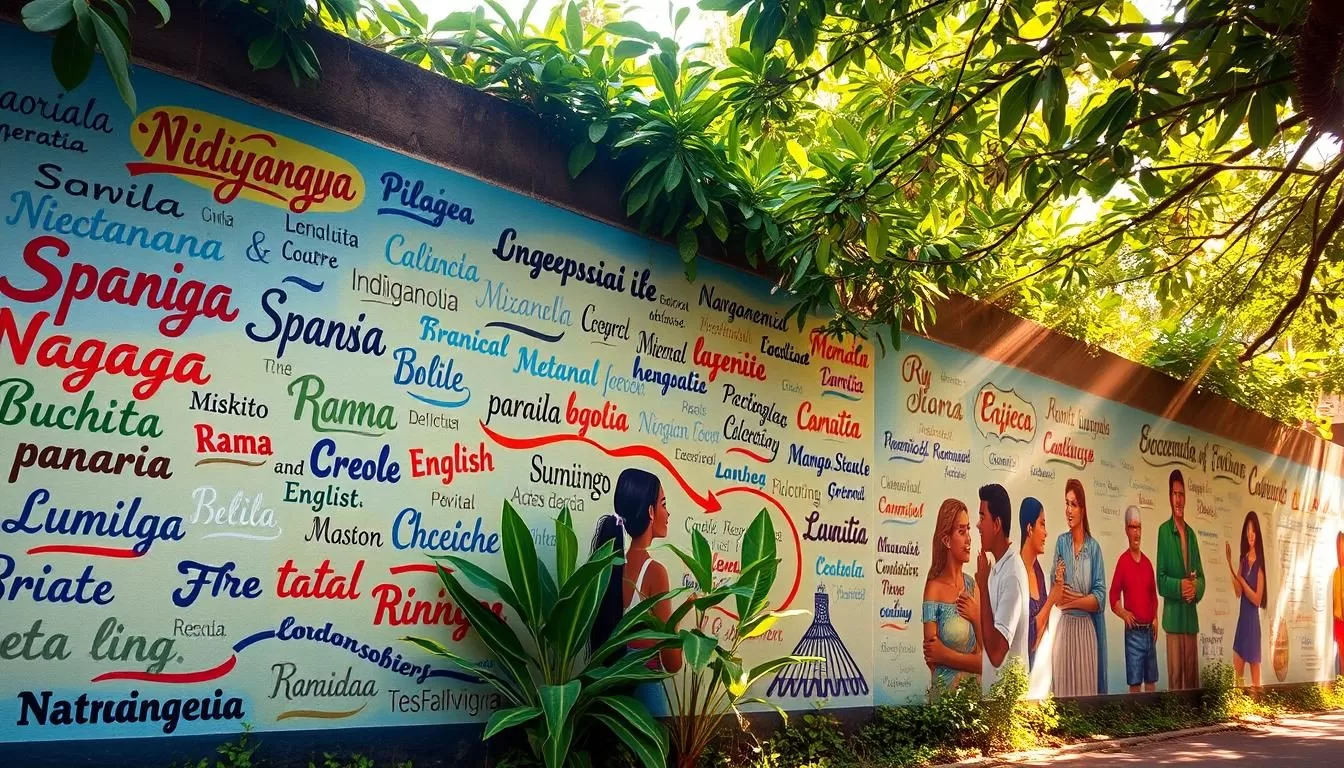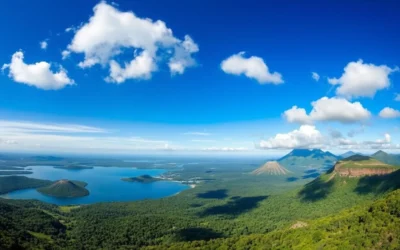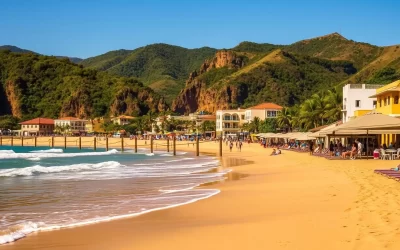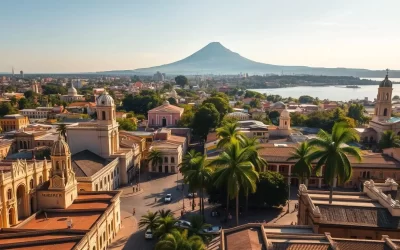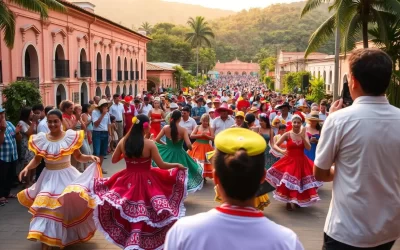When you think about the cultural richness of a country, language often plays a central role. In this Central American nation, Spanish is the primary form of communication, used by 90% of the population. This makes it the dominant language, shaping daily interactions and cultural expressions.
Beyond Spanish, you’ll find a vibrant mix of indigenous languages. These tongues, such as Miskito and Garífuna, are spoken in specific regions, adding layers of diversity to the linguistic landscape. Each language carries unique traditions, connecting communities to their heritage.
Understanding this blend of languages offers insight into how people express their identity. Whether through Spanish or indigenous dialects, language serves as a bridge between past and present. It’s a key part of what makes this country’s culture so fascinating.
Introduction to Nicaragua’s Linguistic Heritage
The story of a nation’s culture is often told through its languages. In this Central American country, the blend of voices reflects centuries of history and diverse influences. From the Caribbean coast to the highlands, each community adds its unique touch to the national identity.
Overview of Cultural Diversity
This country’s cultural diversity is rooted in its multiethnic identity. Indigenous groups, African descendants, and European settlers have all shaped its heritage. Along the Caribbean coast, communities speak English-based creole, adding another layer to the linguistic tapestry.
These groups have preserved their traditions through language. For example, Miskito and Garífuna are still spoken in specific regions. This diversity highlights the resilience of cultural practices over time.
Historical Context and Language Evolution
Language evolution here began long before Spanish colonization. Pre-Columbian societies used indigenous tongues to communicate and preserve their cultures. The arrival of the Spanish in the 16th century introduced new linguistic dynamics.
Colonial rule brought Spanish to the forefront, but indigenous languages persisted. Today, this blend of old and new reflects the country’s complex history. It’s a testament to how heritage and migration shape society.
| Language Group | Region | Cultural Significance |
|---|---|---|
| Spanish | Nationwide | Primary communication |
| Miskito | Caribbean coast | Indigenous heritage |
| English Creole | Caribbean coast | Community identity |
Understanding this linguistic heritage offers a deeper appreciation of the country’s culture. It’s a reminder of how language connects people to their past and present.
Spanish: Nicaragua’s Official Language
From bustling cities to quiet villages, Spanish is the thread that ties communities together. Over 95% of the population speaks it, making it the primary language for daily interactions. Whether you’re in a market or a classroom, Spanish is the key to understanding and connection.
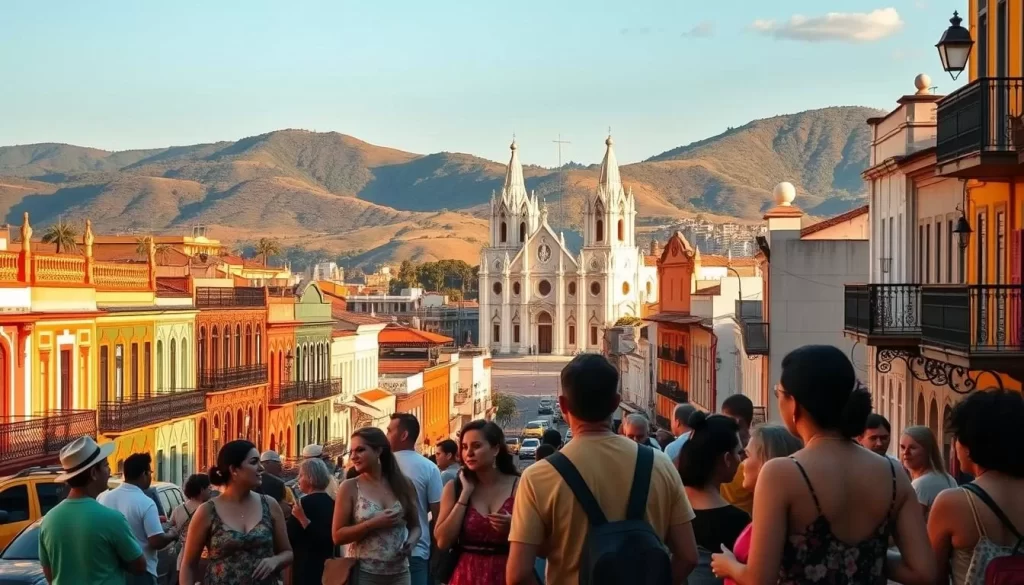
The Role of Spanish in Everyday Life
Spanish isn’t just a language here—it’s a way of life. It’s used in schools, businesses, and homes across the country. This widespread use reflects its importance in shaping cultural identity. Over the centuries, it has evolved to include unique regional features.
Along the coast, you’ll notice subtle differences in pronunciation and vocabulary. These variations highlight the influence of local cultures on the language. Despite these differences, Spanish remains a unifying force for the population.
Voseo and Regional Dialects
One of the most distinctive features of Spanish here is the use of voseo. This form of address replaces the more common tú and is a hallmark of regional identity. It’s a linguistic tradition that has been preserved for centuries.
Regional dialects also add richness to the language. In coastal areas, the influence of indigenous and Creole languages can be heard in everyday speech. These dialects are a testament to the country’s diverse heritage.
| Feature | Region | Significance |
|---|---|---|
| Voseo | Nationwide | Unique form of address |
| Coastal Dialects | Caribbean Coast | Influence of indigenous languages |
| Standard Spanish | Urban Areas | Primary communication |
Understanding these nuances gives you a deeper appreciation of how Spanish shapes life here. It’s a language that bridges the past and present, connecting people across generations.
Indigenous Languages and Community Voices
Language is more than just words—it’s a bridge to heritage and identity. In this Central American nation, indigenous tongues like Miskito, Mayagna, and Rama carry the voices of native communities. These languages are not just tools for communication; they are vibrant expressions of cultural pride.
For many families, these languages are a way to preserve traditions passed down through generations. They connect people to their roots, ensuring that cultural practices remain alive. Despite the dominance of Spanish, these indigenous tongues continue to thrive in specific regions.
Miskito, Mayagna, and Rama Insights
The Miskito language, spoken by over 150,000 people, is a cornerstone of identity for coastal communities. Similarly, Mayagna and Rama languages, though spoken by smaller groups, hold immense cultural significance. These languages have withstood the pressures of modernization and colonization, thanks to the resilience of their speakers.
Community initiatives play a vital role in nurturing these languages. Local leaders and educators work tirelessly to ensure that younger generations learn and value their native tongues. These efforts are crucial for preserving linguistic diversity in the face of globalization.
“Our language is our soul. Without it, we lose a part of who we are.”
Despite challenges, these languages remain a testament to the strength of cultural heritage. They remind us that every word spoken is a step toward preserving history and identity.
Nicaragua: Official and widely spoken languages
In Central America, the blend of voices reflects centuries of history and diverse influences. Spanish is the primary language, spoken by over 95% of the population, making it the cornerstone of daily life. This linguistic dominance shapes everything from education to government, creating a unified cultural identity.
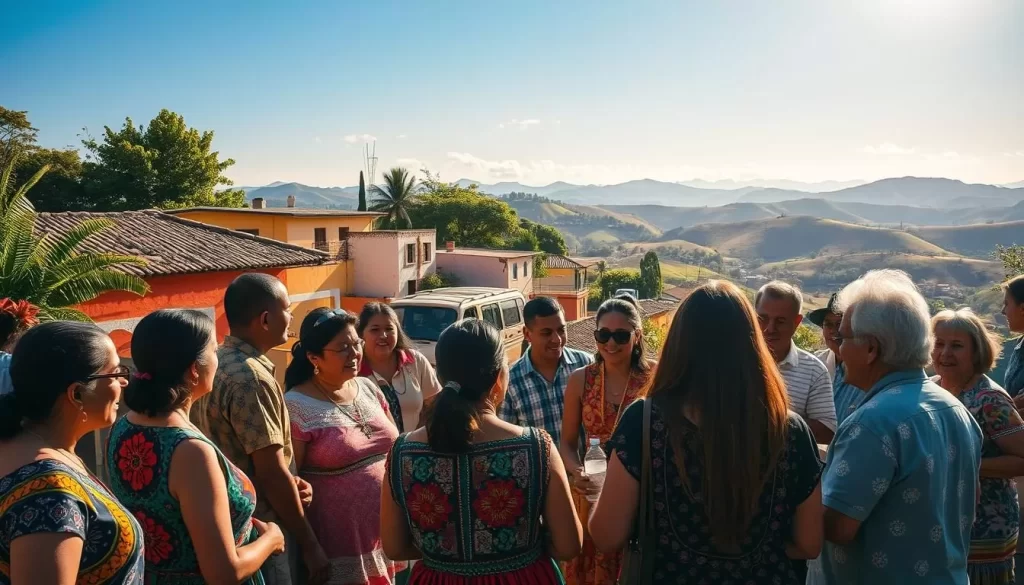
Urban centers like Managua and León are hubs of multilingual dynamics. Here, Spanish intertwines with indigenous languages such as Miskito and Mayangna, fostering unique cultural interactions. These cities serve as melting pots where different language groups coexist, enriching the social fabric.
Beyond Spanish, indigenous languages play a vital role in preserving heritage. Miskito, spoken by over 200,000 people, is a testament to the resilience of native communities. Similarly, Mayangna and Rama languages, though less widely spoken, hold deep cultural significance.
“Language is the thread that weaves together the past and present, connecting us to our roots.”
Demographic groupings reveal how language usage mirrors the country’s complex social fabric. Coastal regions, for instance, showcase a blend of Spanish, Miskito, and Creole, reflecting the area’s diverse history. This linguistic diversity is a hallmark of Central America’s cultural richness.
| Language | Region | Cultural Role |
|---|---|---|
| Spanish | Nationwide | Primary communication |
| Miskito | Caribbean Coast | Indigenous heritage |
| Creole | Coastal Cities | Community identity |
This blend of languages highlights what makes this country unique in Central America. It’s a place where every word spoken tells a story of resilience, identity, and cultural pride.
English and Creole on the Caribbean Coast
The Caribbean coast is a vibrant tapestry of languages, shaped by history and culture. Here, English and its creole varieties play a significant role, especially in tourism and expatriate communities. These languages are not just tools for communication but also markers of identity and heritage.
Over time, English has become a crucial language in coastal areas. It’s widely used in tourism, making it easier for visitors to connect with locals. Expatriate communities also rely on English for daily interactions, creating a unique linguistic blend.
The Role of English in Tourism and Expatriate Communities
Tourism thrives along the Caribbean coast, and English is a key part of this industry. From hotels to guided tours, it bridges the gap between visitors and locals. This has made English a vital language for business and cultural exchange.
Expatriate communities have also shaped the linguistic landscape. Many expats settled here over time, bringing their native English with them. This has influenced local dialects, creating a unique creole spoken by island communities.
Comparisons to neighboring regions like Costa Rica highlight the cross-cultural exchanges that define this area. Both regions share historical ties, but the Caribbean coast stands out for its distinct creole varieties.
| Language | Region | Role |
|---|---|---|
| English | Caribbean Coast | Tourism and expatriate communication |
| Creole | Island Communities | Cultural identity and heritage |
The legacy of colonial times has left a lasting impact on language use here. From British settlers to African influences, the Caribbean coast’s linguistic diversity is a testament to its rich history.
Minority Languages and Their Cultural Contributions
Every culture has its unique voice, and minority languages are the heartbeat of this Central American nation. These tongues, often overshadowed by dominant ones, play a vital role in shaping the cultural form of society. They are not just means of communication but also carriers of tradition, identity, and creativity.
Art, music, and folklore are deeply influenced by these languages. For instance, the Miskito language inspires traditional songs and dances, while Garífuna rhythms echo the stories of their ancestors. These creative expressions are a testament to how minority languages enrich the cultural fabric of Latin America.
Around natural landmarks like lakes, these languages take on unique roles. Communities living near Lake Nicaragua, for example, use their native tongues to pass down stories and rituals tied to the land. This connection between language and nature highlights their importance in preserving local heritage.
Here’s how minority languages contribute to the cultural mosaic:
- They preserve ancient traditions and oral histories.
- They inspire artistic and musical expressions.
- They strengthen community identity around natural landmarks.
Compared to broader Latin American influences, these languages offer a distinct perspective. They remind us that cultural richness lies not just in dominant tongues but also in the voices of smaller communities. Their contributions are essential to understanding the full picture of this nation’s heritage.
In a world where globalization often overshadows local traditions, minority languages stand as a bridge to the past. They are a reminder that every word spoken is a step toward preserving the cultural form of society.
Extinct Languages: A Glimpse into the Past
Exploring extinct languages offers a unique window into a nation’s history. These vanished tongues, once vital during the 16th century, reveal stories of cultural evolution and transformation. Languages like Nahuat, Mangue, Subtiaba, and Matagalpa were integral to communities before fading into obscurity.
These native languages were more than just tools for communication. They carried traditions, beliefs, and identities of the people who spoke them. Over time, factors like colonization and cultural shifts led to their decline.
Nahuat, Mangue, Subtiaba, and Matagalpa
Nahuat, once spoken by indigenous groups, was a cornerstone of cultural expression. Mangue and Subtiaba, though less documented, played similar roles in their communities. Matagalpa, another native language, was deeply tied to the region’s heritage.
During the 16th century, these languages faced immense pressure from external influences. The dominance of Spanish as the official language nicaragua overshadowed indigenous tongues, leading to their gradual disappearance.
Despite their extinction, these languages left a lasting legacy. They remind us of the rich linguistic diversity that once thrived. Their stories are preserved in historical records and cultural memory.
| Language | Region | Historical Role |
|---|---|---|
| Nahuat | Central Highlands | Cultural expression |
| Mangue | Pacific Coast | Community identity |
| Subtiaba | Western Region | Heritage preservation |
| Matagalpa | Northern Highlands | Regional traditions |
Understanding these extinct languages helps us appreciate the depth of cultural heritage. They are a testament to the resilience of communities in the face of change. To learn more about the broader linguistic context, explore the Macro-Chibchan language family.
Language Revival and Educational Initiatives
Reviving endangered languages is a daily commitment to preserving cultural identity. Across communities, efforts are underway to ensure that indigenous tongues continue to thrive. These initiatives are not just about words; they’re about keeping traditions alive for future generations.
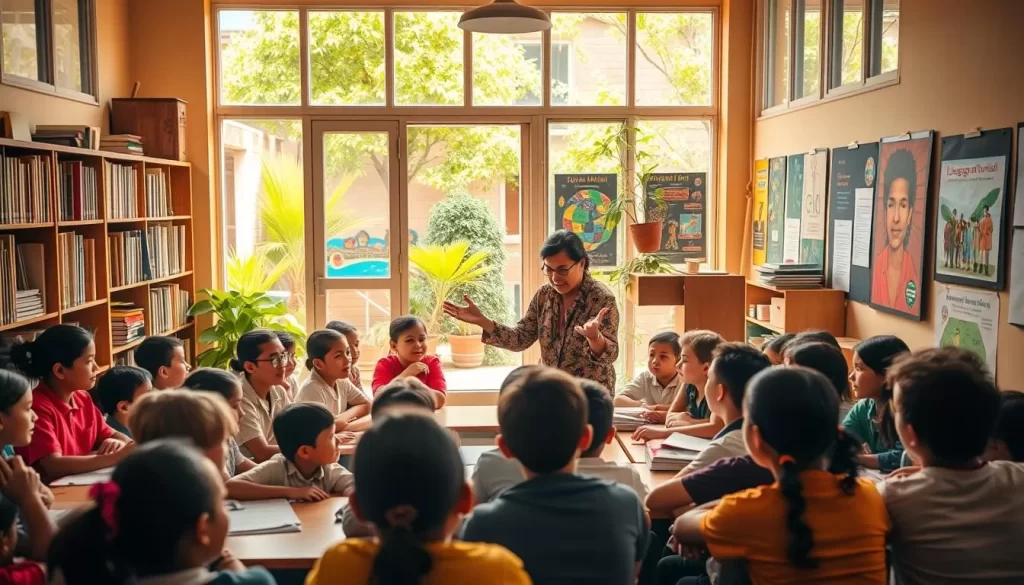
Efforts to Preserve Indigenous Tongues
Many Nicaraguans are working tirelessly to revive their native languages. Projects like the Náhuat Cuna initiative focus on early immersion, teaching children as young as three to speak and value their heritage. These programs are crucial in ensuring that the name and essence of these languages are not lost.
Community-driven approaches, such as the Limi Youth Society’s digital dictionary, highlight the importance of documenting traditional songs and words. These efforts bring together speakers, educators, and leaders to create resources that support language learning.
Challenges and Successes in Revitalization
Despite the enthusiasm, challenges remain. Limited resources and shifting cultural practices make it difficult to sustain these initiatives. Each day brings new obstacles, but also small victories that keep the momentum alive.
Success stories, like the revival of the Miskito language, show how preserving a name can renew pride and identity. Many Nicaraguans are finding ways to integrate their native tongues into modern life, ensuring they remain relevant.
“Every word we save is a step toward preserving who we are.”
These efforts are essential for maintaining the rich linguistic diversity of the region. To learn more about ongoing language preservation efforts, explore the resources available.
The Impact of Colonial History on Today’s Languages
Colonial history has left a lasting imprint on the linguistic landscape of this Central American nation. The Spanish conquest introduced new dialects and reshaped the way people communicate. Over time, these changes became deeply embedded in the culture, influencing everything from daily conversations to artistic expressions.
One of the most significant outcomes of colonialism was the blending of languages. Indigenous words were adopted into Spanish, enriching the vocabulary and creating unique regional dialects. This fusion is especially evident in coastal areas, where indigenous and Creole influences are strongest.
Certain regions became key places for linguistic convergence. For example, the Caribbean coast emerged as a hub where Spanish, English, and Creole intersected. This mix reflects the area’s history of trade and cultural exchange.
Colonial policies also played a role in shaping language dynamics. The dominance of Spanish as the official language marginalized indigenous tongues, but efforts to preserve these languages continue today. Understanding this history helps explain the rich diversity of Nicaragua’s linguistic landscape.
In summary, colonialism didn’t just introduce new words or dialects—it transformed entire regions into places of linguistic innovation. This legacy continues to influence how people speak and connect with their heritage.
Linguistic Diversity and Daily Life in Nicaragua
In a land where voices intertwine, language becomes the heartbeat of daily life. From bustling markets to quiet village gatherings, the blend of tongues shapes how people connect and communicate. This diversity isn’t just about words—it’s about identity, tradition, and belonging.
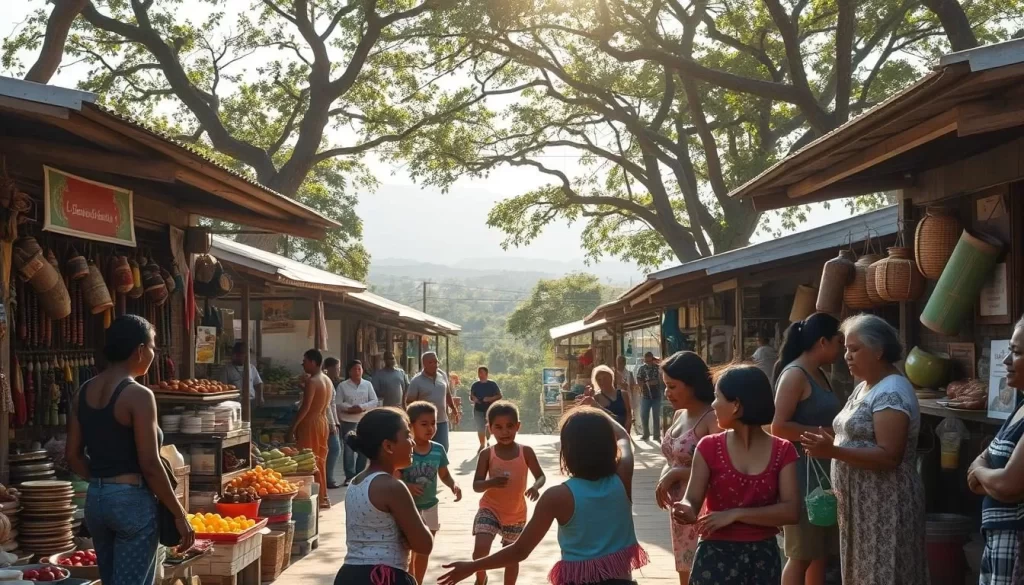
How Multiple Languages Shape Community Interactions
The Miskito language is a cornerstone of community life for many. Spoken by over 170,000 people, it’s more than a means of communication—it’s a symbol of heritage and unity. In coastal regions, it’s common to hear Miskito alongside Spanish, creating a unique linguistic tapestry.
Indigenous languages, even those spoken by a minority, play a vital role in cultural events. Traditional songs, dances, and rituals often use these tongues, preserving ancient customs. This richness adds depth to everyday interactions, making each conversation a celebration of diversity.
Social gatherings are where this linguistic blend truly shines. Whether it’s a family meal or a community festival, the mix of languages fosters creativity and connection. It’s a reminder that every word spoken carries the weight of history and culture.
“Language is the thread that weaves together the past and present, connecting us to our roots.”
Understanding this diversity offers insight into how people navigate their world. For example, the development of Nicaraguan Sign Language highlights how language shapes thought and community bonds. It’s a testament to the power of communication in building identity.
In regions where nicaragua indigenous languages thrive, daily life is enriched by this linguistic mosaic. From storytelling to problem-solving, the interplay of tongues fosters resilience and creativity. It’s a living example of how diversity strengthens communities.
Conclusion
Language is a living testament to a nation’s history and identity. The rich variation in this country’s linguistic landscape reflects centuries of cultural evolution. From dominant tongues to indigenous dialects, each language tells a story of resilience and heritage.
Along the coast, creole languages add another layer to this vibrant tapestry. These unique blends of influences highlight the importance of preserving linguistic diversity. They ensure that cultural expressions remain alive for future generations.
Historical, social, and cultural factors have intertwined to shape today’s language panorama. Understanding this interplay offers a deeper appreciation of how communities connect with their roots. It’s a reminder that every word spoken carries the weight of tradition and identity.
Take a moment to explore the unique variations that continue to shape daily life. Whether through dominant or creole languages, each voice contributes to the nation’s rich cultural mosaic. Discover more about these fascinating linguistic journeys here.
The above is subject to change.
Check back often to TRAVEL.COM for the latest travel tips and deals.
Here are some Tours & Sightseeing suggestions that might pique your interests!
